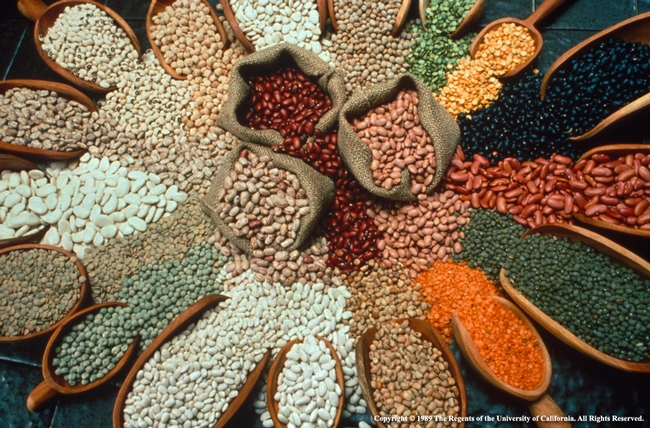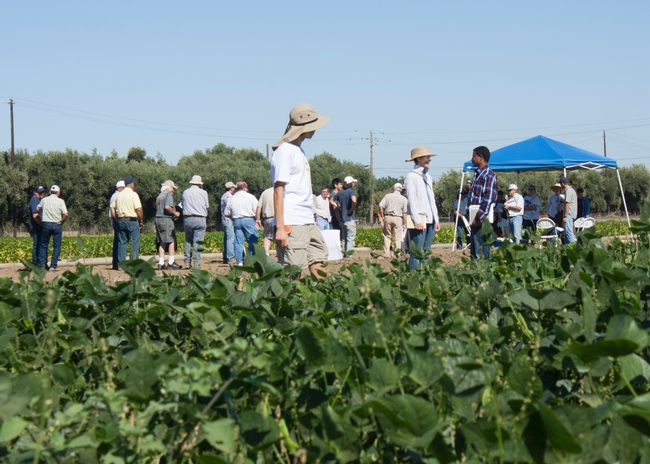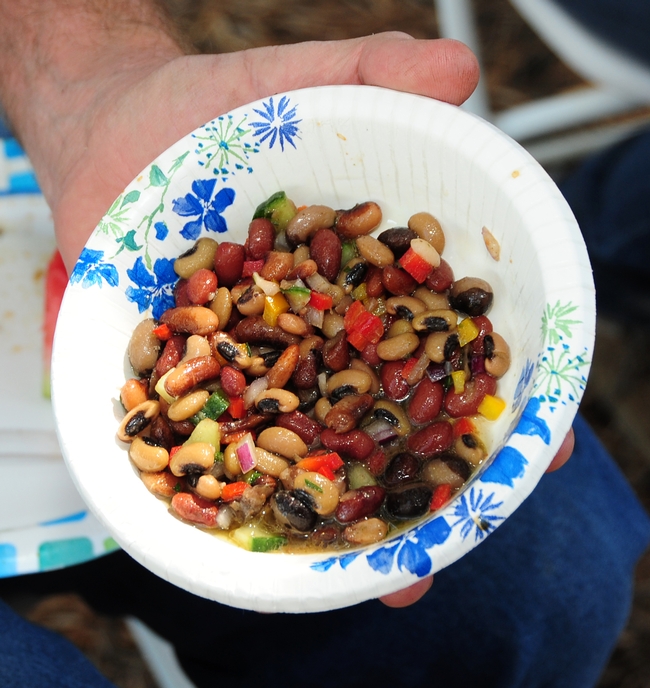UC Blogs
UC Field Day showcases California’s dry-bean research advancements
California consumers may not “know beans about beans,” but they should.
Dry beans are a big business in California. In 2011, growers harvested 45,000 acres of dry beans valued at $58 million. Lima beans accounted for about 40 percent of this total acreage, with California producing nearly 99 percent of the U.S. domestic supply of dry lima beans.
Why should we be so interested in beans? From a nutritional standpoint, dry beans are a healthy food choice - an excellent source of protein, fiber, vitamins and minerals, plus they’re very low in fat. Organizations such as the American Heart Association, the American Diabetes Association and the USDA’s My Plate all recommend including beans in one’s diet to reduce cholesterol, maintain normal blood sugar and to maintain a healthy weight. The California Dry Bean Advisory Board posts many bean recipes on their website at http://calbeans.org/.
From a production standpoint, beans are a crucial crop for farmers. California growers produce four main classes of dry beans, including limas (large and baby), common beans (such as kidneys, pinks, whites, cranberries and blacks), garbanzos (chickpeas), and cowpeas (blackeye beans). Garbanzo beans are grown as a winter crop, while the others are produced in the summer. California’s dry beans are marketed throughout the world, including Japan, Mexico, Canada, and the United Kingdom. California also grows dry bean seed stock for export to other states and international markets.
In rotation with other crops beans help control weeds, add biomass to the soil via plant matter disked into the ground after harvest, and require relatively few pesticides. In addition, beans, as legumes, fix nitrogen from the air via nitrogen-fixing bacteria that colonize the roots, forming nodules. Cowpeas, for example, fix about 100 pounds of nitrogen per acre, providing most of the nitrogen needs for this crop. Likewise, garbanzo beans require minimal nitrogen inputs for crop production. Economically, beans can enhance the annual farm profitability because common beans and cowpeas can be double-cropped with grains or forage crops, producing two crops in one year.
University of California scientists showcased their dry bean research advancements at the annual UC Dry Bean Field Day, held Sept. 5 at the UC Davis agronomy farm. The event drew more than 50 growers, industry representatives, students, faculty members and UC Cooperative Extension farm advisors.
The participants learned about UC research trials, led by Paul Gepts, professor in the Department of Plant Sciences at UC Davis, focus on dry bean breeding programs for pest and disease resistance, drought tolerance, organic production, and yield and quality increases. “Dry” refers to allowing the beans to fully mature and dry on the plants, as opposed to picking the beans green as a fresh market vegetable.
Many of today’s commercially grown dry beans come from University of California varieties, such as those shown at the UC Field Day. Seed germplasm for different genetic traits are selected from all over the world. The lima bean trial at UC Davis included 56 seed selection entries, the heirloom beans included 25 entries, and cranberries and pink beans had 134 entries. Earlier this year eight advanced line garbanzo entries were tested. UC Davis researchers work with hybrids produced by hand crosses to increase seed yield, quality, pest and disease resistance and plant vigor. They receive funding from a variety of sources including the California Dry Bean Advisory Board and USDA.
As shown from this field day, UC research is leading the way to ensuring that the future of California’s dry bean industry remains strong. These efforts will continue to enhance sustainable farming practices in our state and provide nutritional benefits to consumers.
The bottom line is that beans are good for you. A special treat at the UC Davis Field Day luncheon, served at picnic tables shaded by olive trees on Bee Biology Road, was a locally produced three-bean salad. It vanished within minutes. “Excellent!” the attendees raved.
So, the next time you’re in the produce section of your favorite grocery store, enjoy some California-grown beans. From the field to fork, these beans are the best of the best.
Additional resources:
Blackeye bean production in California, UC ANR publication number 21518.
Common bean production in California, UC ANR publication 8402.
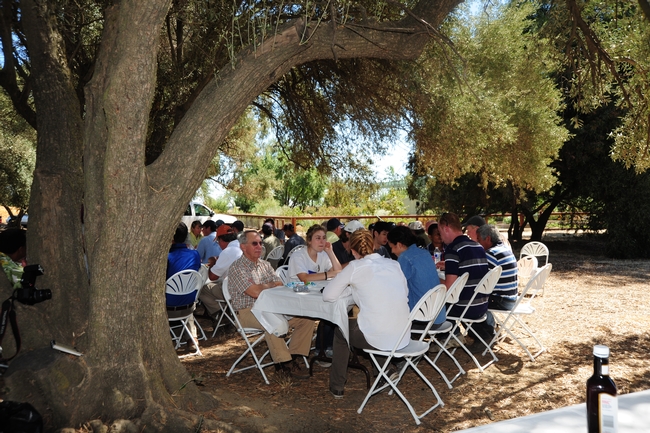
Dry bean field day luncheon at UC Davis. (Photo: Kathy Keatley Garvey)
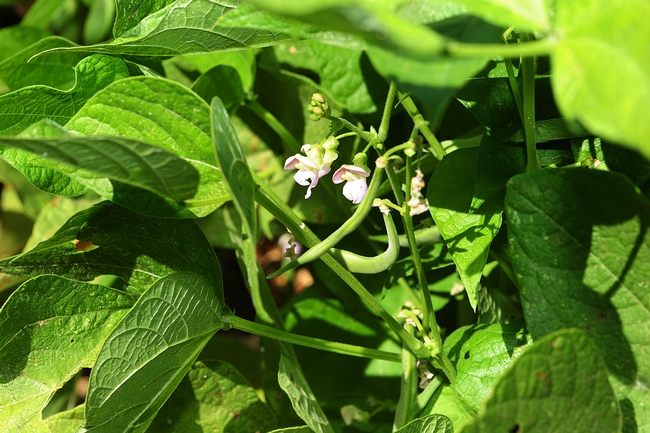
Bean plant. (Photo: Kathy Keatley Garvey)
Love in the Bean Field
Love is where you find it. And sometimes you find it in a bean field. Take the UC Dry Bean Field Day on Sept. 5 at UC Davis. As researchers,...
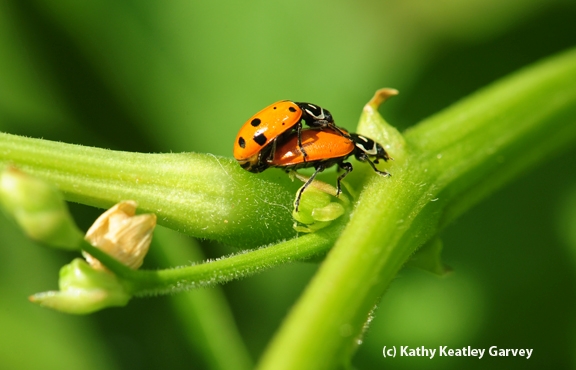
Love in the bean field at the UC Dry Bean Field Day. (Photo by Kathy Keatley Garvey)
Conservation leaders honored at UC Twilight Field Day
Three conservation agriculture pioneers were honored at the UC Conservation Agriculture Systems Innovation Twilight Field Day at the UC West Side Research and Extension Center yesterday, reported Patrick Cavanaugh in the California Ag Today blog.
CASI chair Jeff Mitchell, UC Cooperative Extension specialist in the Department of Plant Sciences at UC Davis, presented the awards before the conclusion of an event that included tours of three local farms and three sites at the field station.
Ron Harben, project director at the California Association of Resource Conservation Districts, was recognized for outstanding service to CASI. Ralph Cesena, Sr., president of Cesena Distributing in Stockton, received the CASI Industry Innovator Award. Danny Ramos, manager of Morning Star company's Lucero Farmers, was presented the Conservation Tillage Farmer Innovator Award.
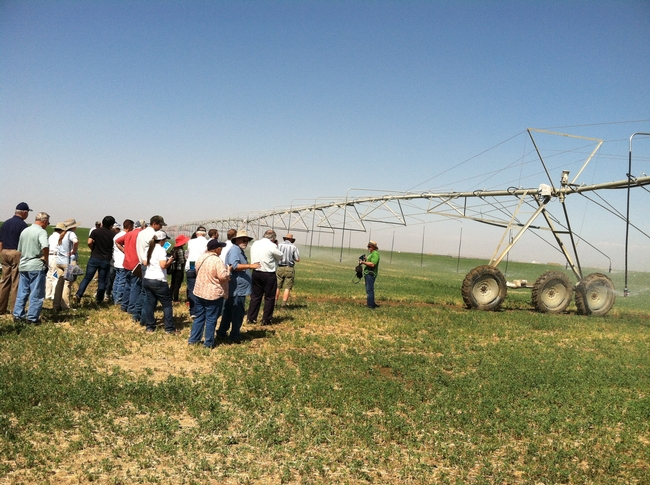
Twilight Field Day participants view a center pivot irrigation system.
The Pretty, Persistent Peach Tree Pest
Late July, while foraging through peach tree branches to pick the ripe fruit, I paused to stretch my back and was inundated with sawdust tumbling off the leaves. The more I looked, the more I realized the woody grains were localized in one area. Figuring the wind carried the debris onto my backyard tree, I hosed it off and went on with the day. But after several occasions of being greeted with a layer of sawdust on the same leaves, I grew curious. During an inspection of the old tree, I discovered two bore holes that penetrated into the wood over three inches deep with the openings as round as my index finger.
What on earth is drilling such large holes in this tree? I wondered.
After research revealed the attacker was a peach tree borer, Synanthedon exitiosa, I kept watch for the adult insect and larvae whose photos are displayed online at http://ipm.ucdavis.edu/PMG/r602301211.html (click the first word of the third sentence: Adults.) Although I never saw the “Adult peach tree borer” featured in one of the photos (which I later learned is the smaller more slender male whose both wings are transparent), I did see the female in my tree.
And let me tell you, this gal was gorgeous. She measured about one and a half inches long and sported a dark almost black steel-blue body with dark black-like forewings and clear hind wings with black margins. A brilliant orange band encircled her abdomen. (See photo below and visit http://bugguide.net/node/view/216752/bgpage for a great closeup shot).
Needless to say, I stood beside my peach tree transfixed — debating whether to bolt for the kitchen bug killer or race to the far end of the house to get my camera. The spray can won, so I let that flying flirt flitting through the branches have it. Despite searching both tree and ground for her body to preserve for pictures, I never saw the pretty and persistent Synanthedon exitiosa again.
Unfortunately, I learned that I’ll have to wait until next spring to know for sure if she’s really gone and how many borers she left behind. Since females lay an average of 500-600 eggs, who knows how many larvae are tunneling their way deeper through the bark and into the sapwood of my tree? Next spring I could come face to face with more culprits after pupation takes place and the next generation of moths emerge. To prevent the possibility of another attack, I filled the bore holes with the bug killer and my husband sawed off the large tree limb that was penetrated. In the meantime, I’ll encourage the ants, spiders and lacewings and the birds that prey on the eggs and larvae.
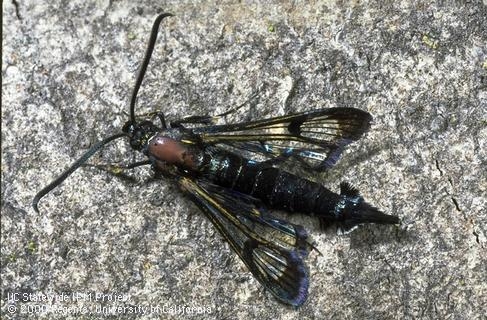
Adult male peachtree borer (photo UC IPM online)
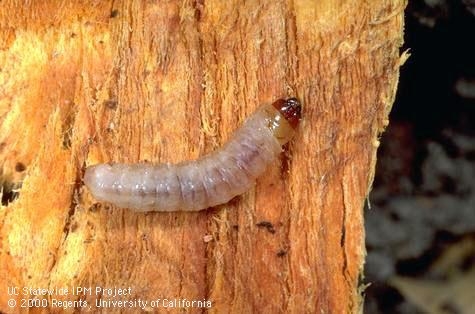
Peach tree borer larva (photo UC IPM online)
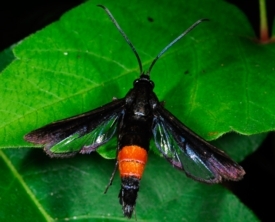
Female peach tree borer (photo from Univ. of Kentucky Ag. dept)
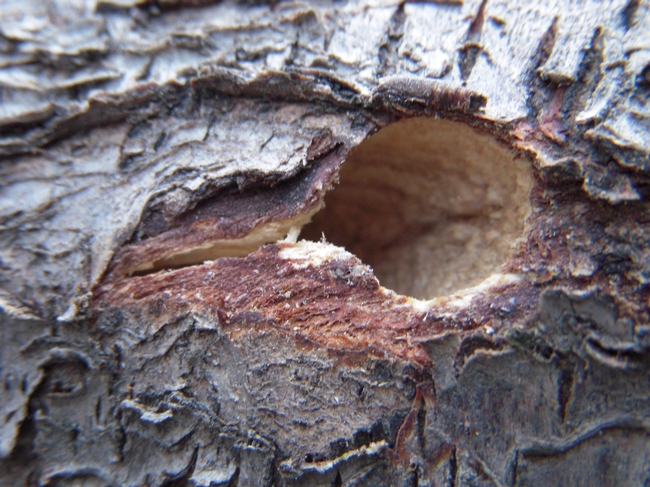
Bore hole on side of limb - photo by Launa Herrmann
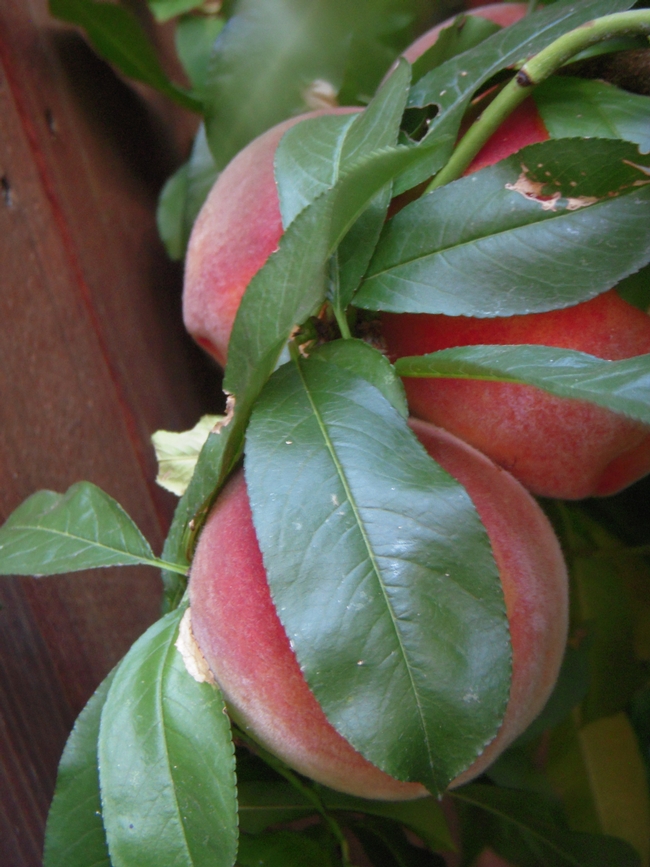
Peaches by Launa Herrmann
A Miss Is as Good as a Mile
A miss is as good as a mile...or a smile. The Buckeye (Junonia coenia) is a striking butterfly patterned with eyespots and white bars. We saw one...
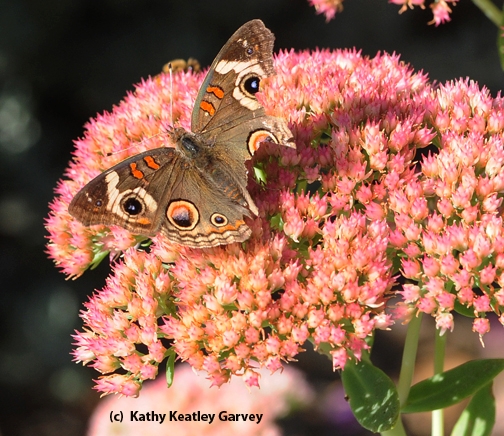
Buckeye butterfly on sedum. Note the missing chunks of its wings. (Photo by Kathy Keatley Garvey)
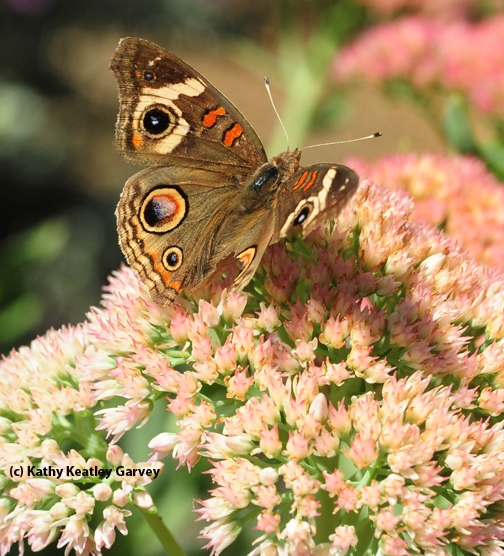
Sideview of Buckeye butterfly-almost a meal for a predator. (Photo by Kathy Keatley Garvey)
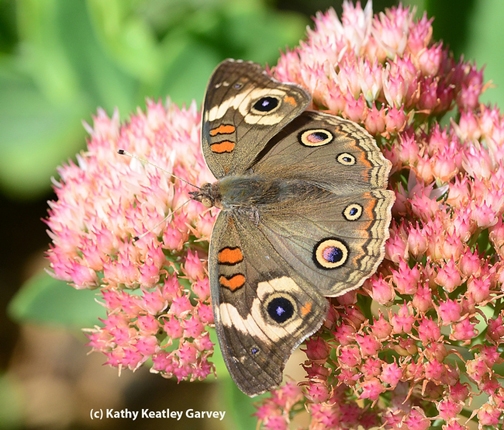
An intact Buckeye on sedum. (Photo by Kathy Keatley Garvey)


